There are two types of tiles, both of which are versatile and elegant. These are versatile because they are perfect for bathrooms, kitchens, backsplashes, and even walls. They are available in a wide range of colours and designs, and that means you can match or create your style. When you are designing or redesigning your […]
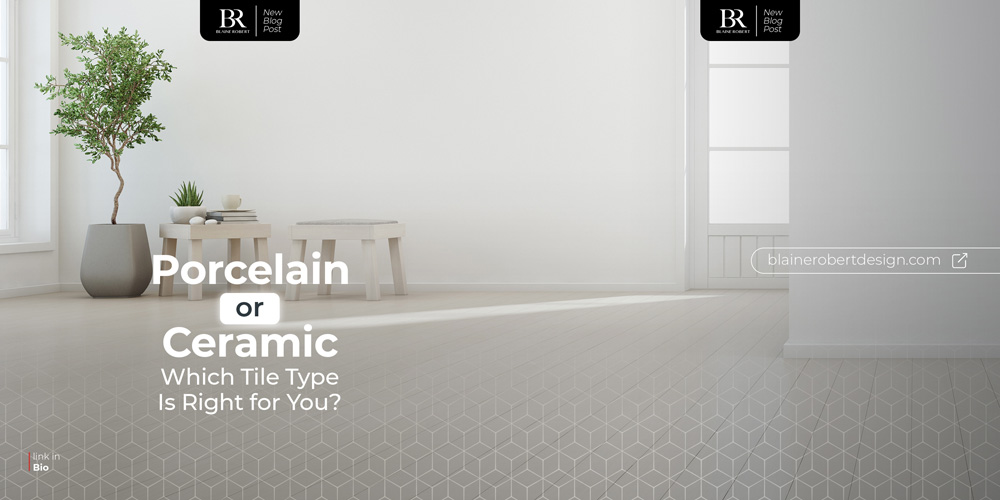
There are two types of tiles, both of which are versatile and elegant. These are versatile because they are perfect for bathrooms, kitchens, backsplashes, and even walls. They are available in a wide range of colours and designs, and that means you can match or create your style.
When you are designing or redesigning your home, there will come a time when you’ll have to decide between Porcelain Tile vs Ceramic Tile.
Porcelain is as beautiful and elegant as ceramic. They can often push you into a dilemma over which one to have. So, it is essential to know their differences and their pros and cons.
If you are on the fence between choosing ceramic tiles and porcelain tiles, this article is for you.
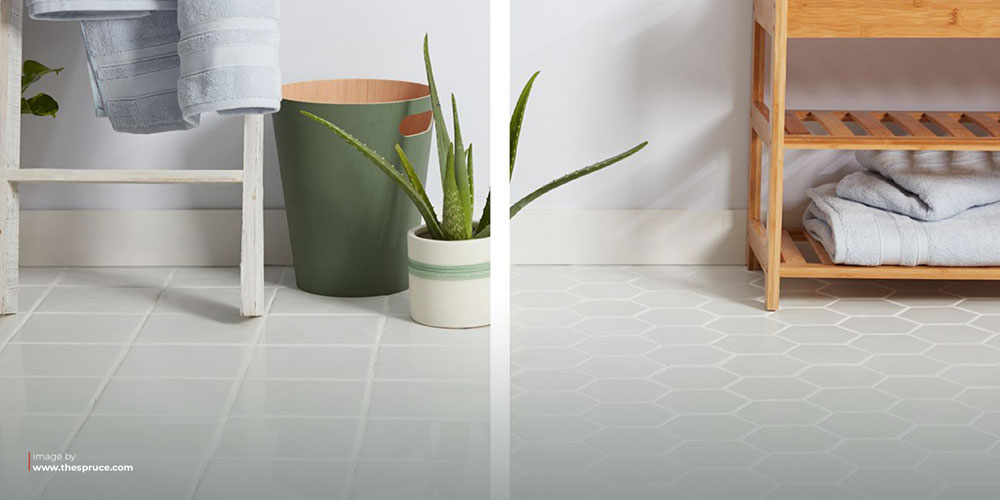
Read on and find out:
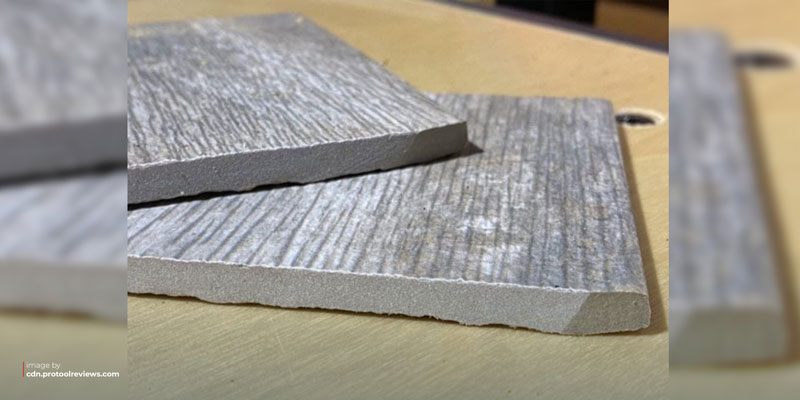
Ceramic and porcelain look almost similar unless you have a trained eye and it is not always easy to distinguish them with a glance.
Let’s get into the details.
Both of them are clay-based and are kiln-fired. Porcelain, however, is a particular type of ceramic. The clay that is used to make porcelain has a higher density and is heated at a higher temperature than ceramic.
Due to the differences in ingredients and production methods, both of these materials have unique features, and benefits and disadvantages.
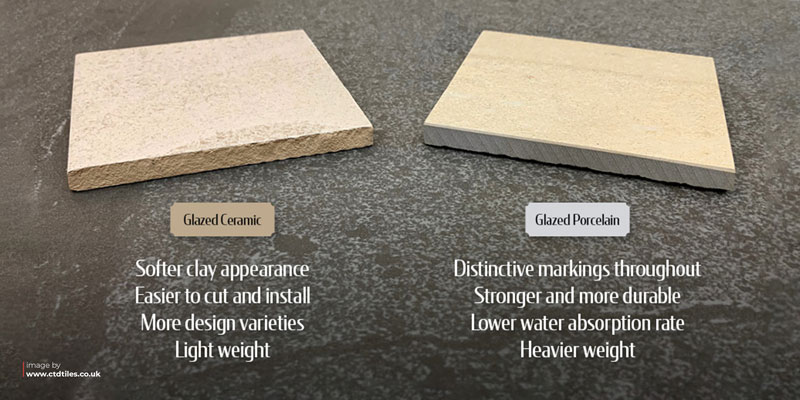
The best way to determine what the tiles are made of is to look at the package. The details are always mentioned on the package. In rare cases, it does not. If you cannot find the package details, then you can contact the material supplier. There is also a thumb rule to help you determine the nature of the tile – whether it is loose or installed already.

There are significant differences between porcelain and ceramic tiles, as we said above. The main differences are in their composition and manufacturing process. Porcelain is made from a comparatively finer mix of clay, packed at higher pressures and then baked at higher temperatures at the kiln. This difference gives porcelain its unique traits.
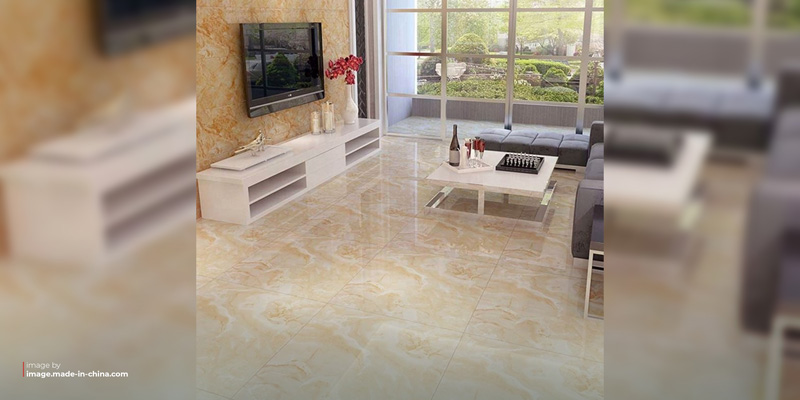
The utilities of porcelain tiles will amaze you, but sadly, there are some downsides to using them.

Ceramic tiles come in a wide range of styles, colours and finishes. You can have anything from simple to ornate and classic to contemporary designs.

Ceramic is popular due to its many advantages, but there are a few things to consider.
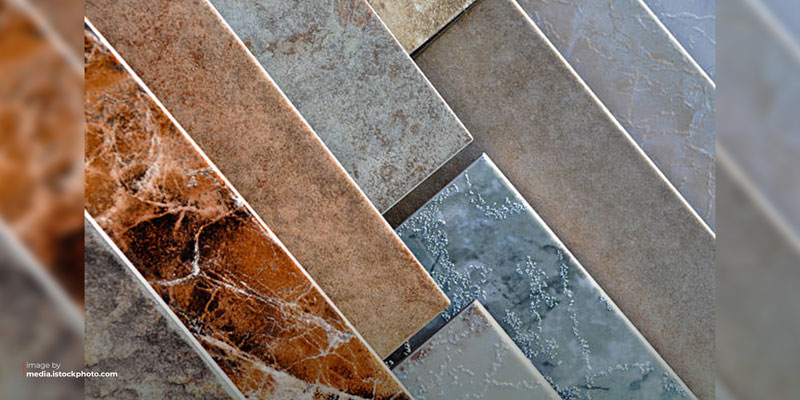
A heady question. Is it not? Which one should you buy?
Well, it depends.
It depends on where in your house you’ll be using them. Water resistance and cost are the two most significant factors to consider.
Porcelain tiles have more water resistance, so they are ideal for places with lots of moisture. This strength also makes porcelain tiles great for use outside the house, like on the patio. Ceramic tiles are not suitable for outdoor use because they are more porous and often crack during winter. Both porcelain and ceramic tiles are used in showers and bathrooms.
If you determine which type to use for shower installation, we suggest you consider functionality and budget. Thus, ceramic tiles are suitable for the walls, while porcelain would be great for the floors.
Porcelain tiles are harder and denser, which makes them long-lasting. That makes these products ideal for high-footfall areas like hallways, kitchens and living spaces. Ceramic tiles are softer and are more comfortable to walk on. These also stay cooler than porcelain tiles and thus are best for warmer climes.
We hope now you are in a better position to understand porcelain and ceramic; they may look alike but aren’t twins. So, when planning your home or its renovation, pick wisely. You home, your tiles.
42-1, Jalan Doraisamy 50300 Kuala Lumpur, Malaysia.
Office No.1104, Aspect Tower, Business Bay, Dubai, United Arab Emirates
19, Jalan Mutiara Emas 2A, Taman Mount Austin, 81100 JB.